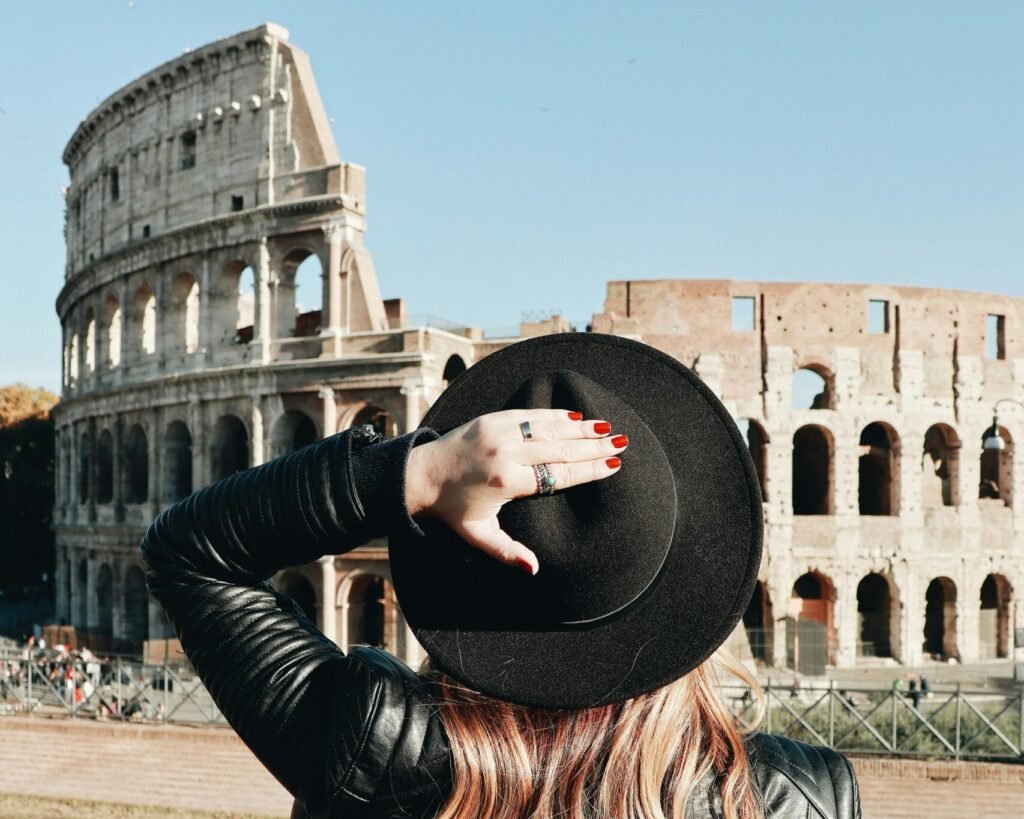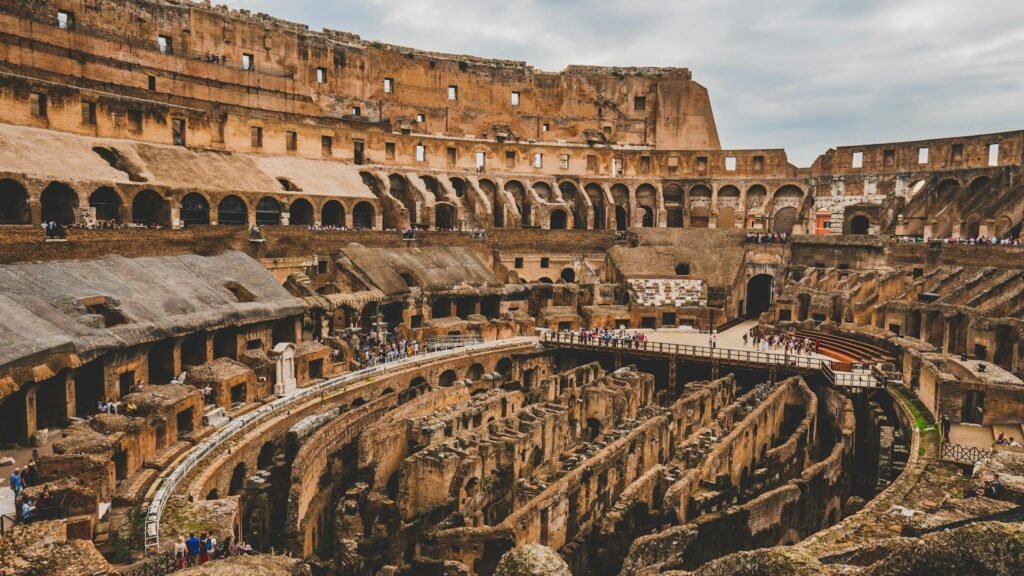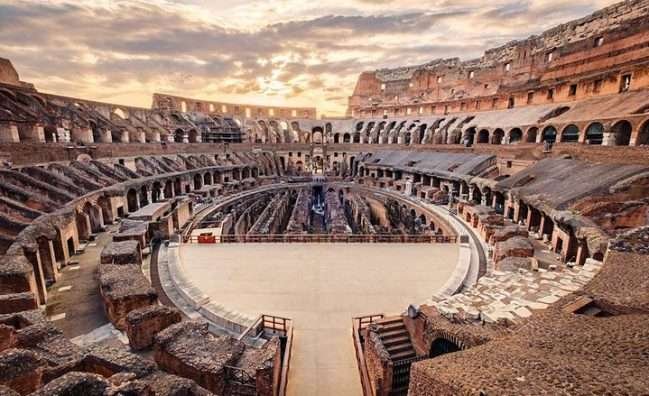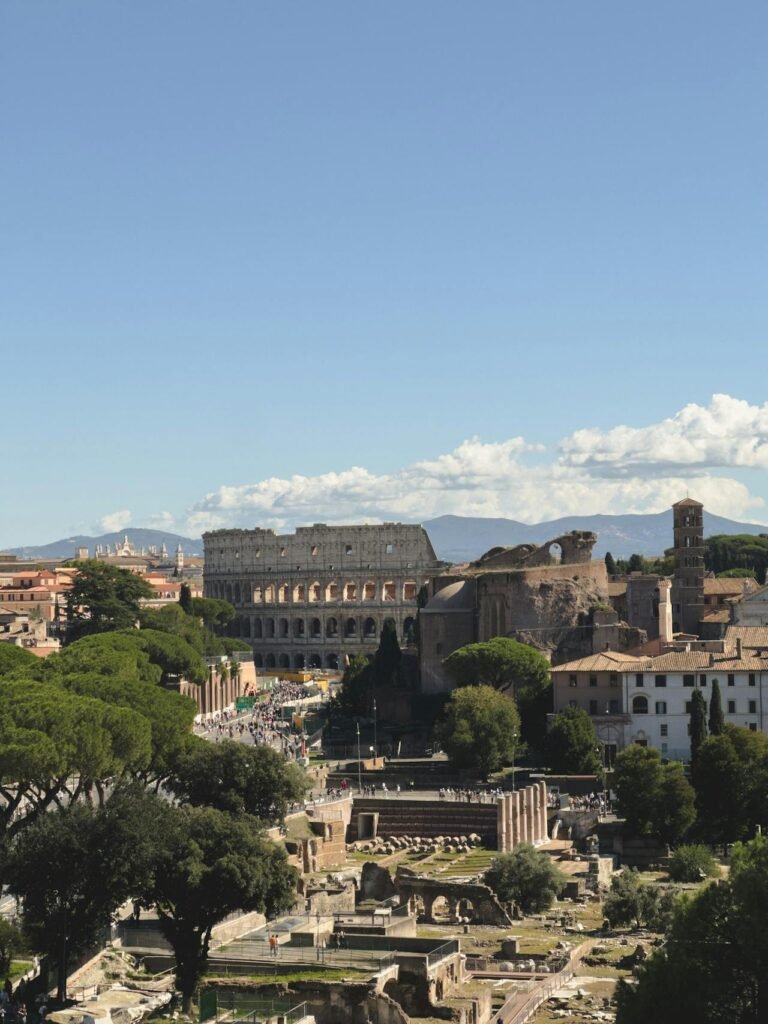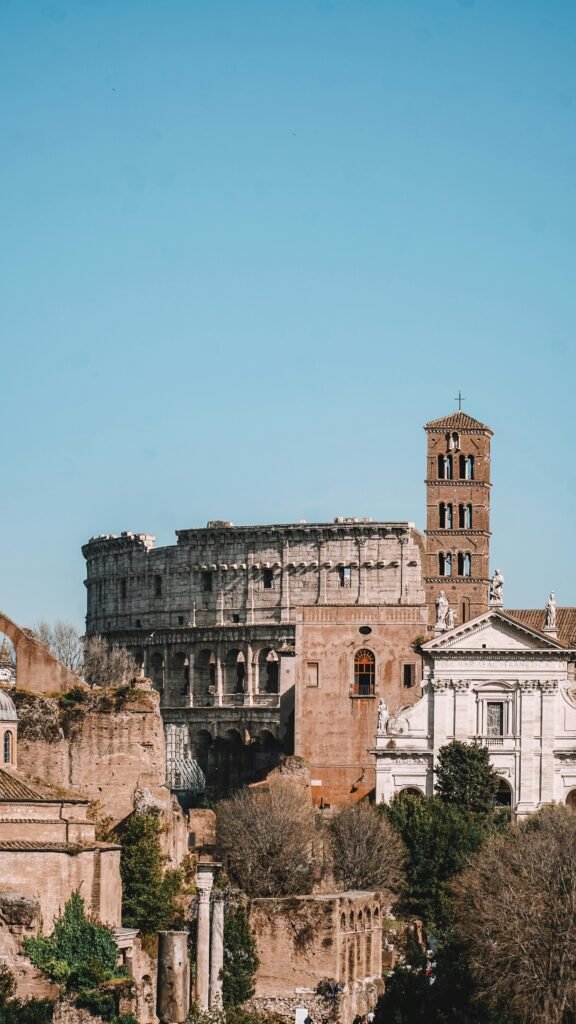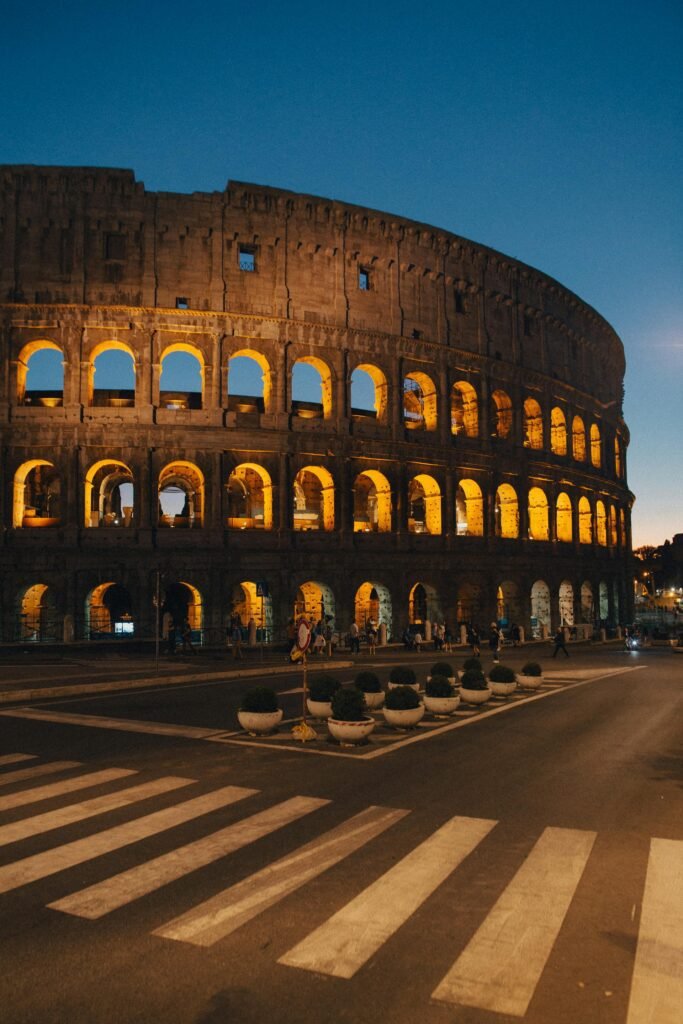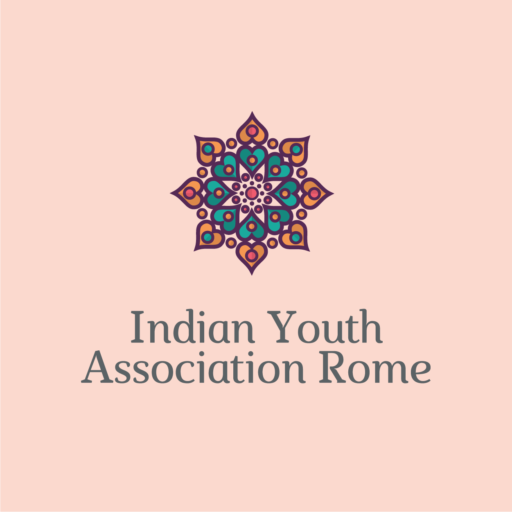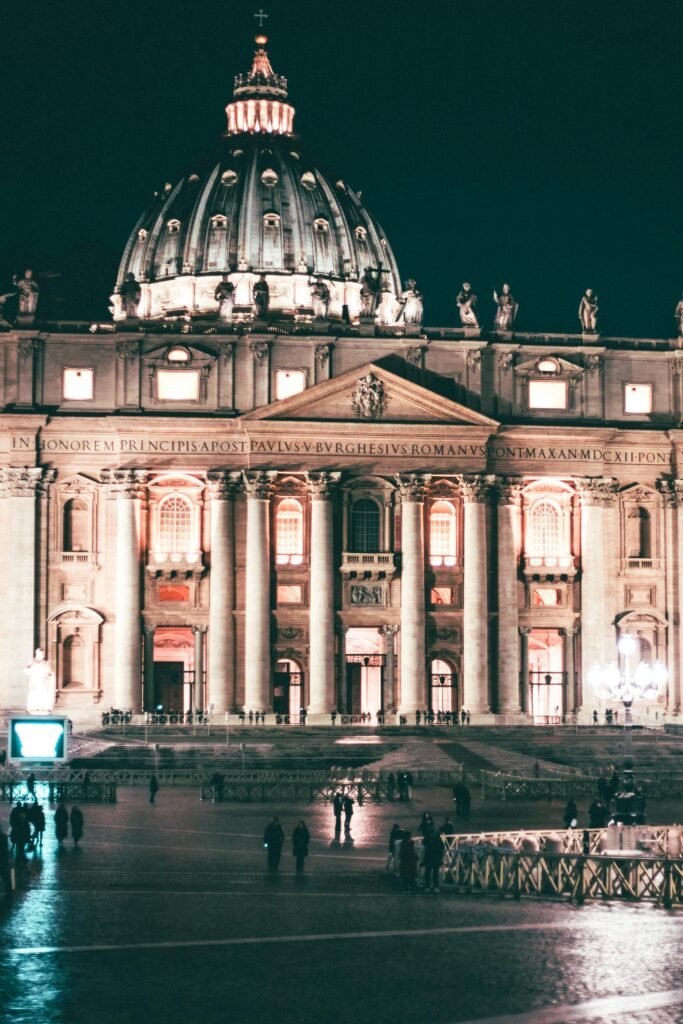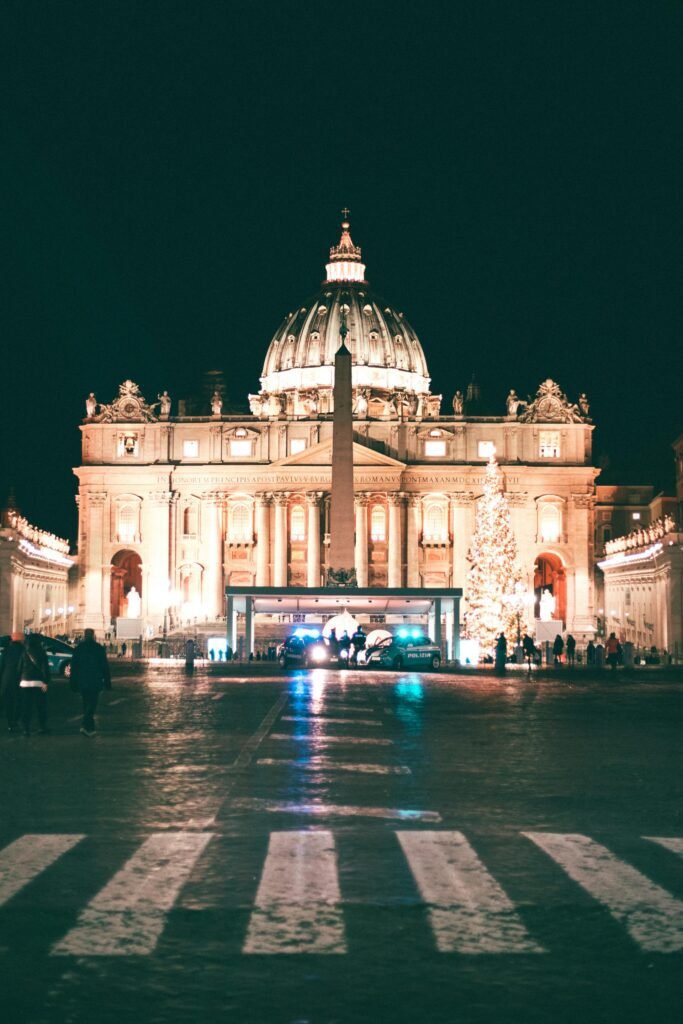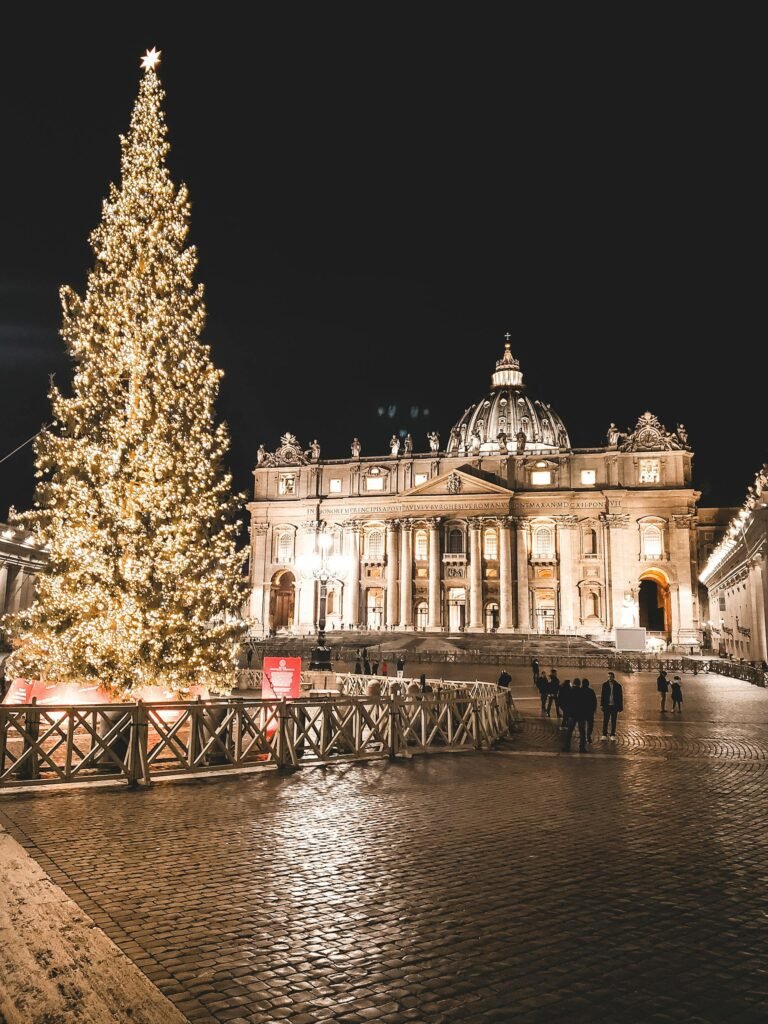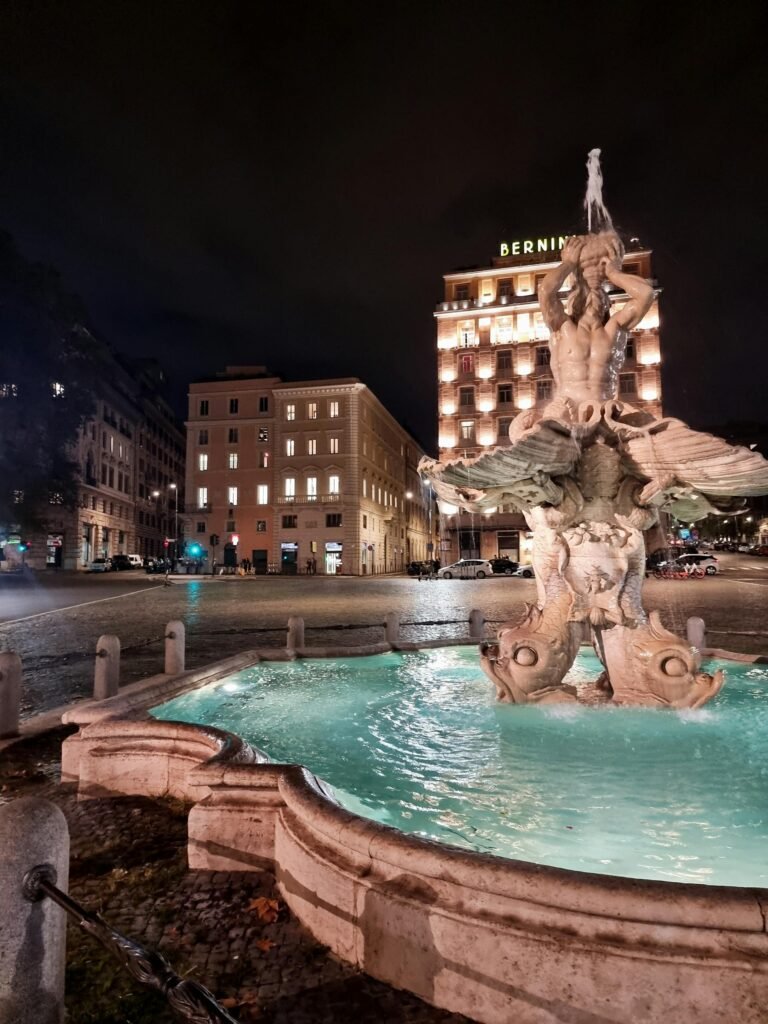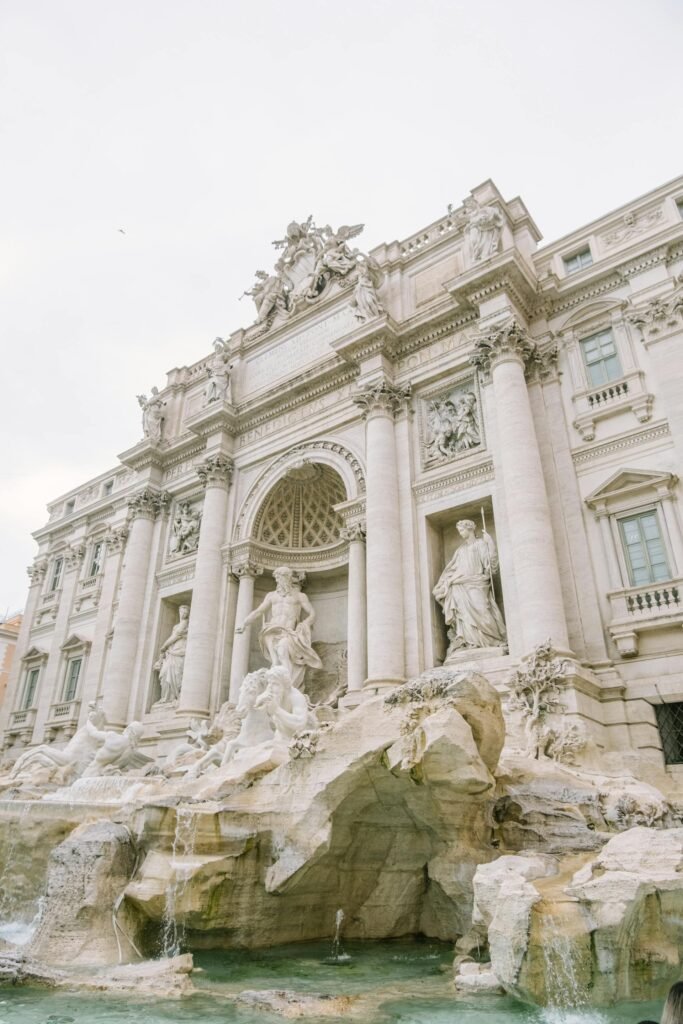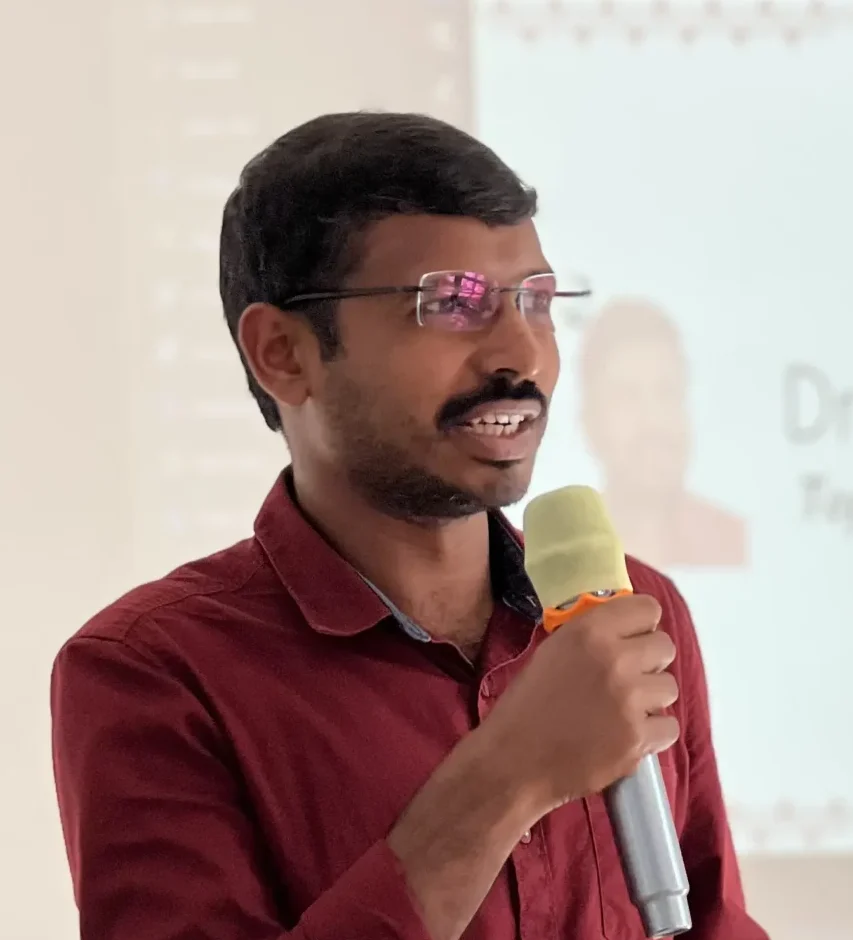Rome, the Eternal City, brims with historical splendor, artistic magnificence, and cultural richness. While iconic landmarks like the Colosseum, Vatican City, and the Roman Forum are well worth a visit, it is the lesser-known areas that truly give you a glimpse into the authentic Roman lifestyle. For Indian immigrants settling in or visiting Rome, understanding these hidden gems can greatly enhance the experience of integrating into this vibrant city.
Trastevere, a charming neighborhood nestled on the west bank of the Tiber River, is a locale often overlooked by tourists. Known for its cobblestone streets, ancient churches, and a lively nightlife scene, Trastevere offers a mix of traditional Roman and modern ambiance. Here, you can enjoy traditional Roman cuisine in family-owned trattorias, explore the Basilica di Santa Maria, or stroll through the verdant Botanical Garden. Moreover, the Sunday market at Porta Portese is an excellent spot for finding unique items and mingling with locals.
Equally captivating is the Aventine Hill, one of Rome’s seven hills. This tranquil neighborhood provides a serene escape from the bustling city center. The key attraction here is the Aventine Keyhole, offering a perfectly framed view of St. Peter’s Basilica through a distant garden gate. The orange garden, Giardino degli Aranci, offers panoramic views over Rome and a peaceful setting ideal for relaxation. Nearby, the Church of Santa Sabina is a masterpiece of early Christian architecture worth visiting.
First-time visitors to Rome should be aware of practical tips for navigating public spaces and local customs. Rome boasts an extensive public transportation system, including buses, trams, and the metro. Familiarizing yourself with the ATAC website or mobile app can simplify transit around the city. When visiting religious sites, modest attire is recommended; shoulders and knees should be covered. Additionally, locals appreciate polite greetings, such as “Buongiorno” (Good Morning) or “Buonasera” (Good Evening), when entering shops or restaurants.
Embracing these insights will not only make your transition smoother but also enrich your experience of Rome, allowing you to discover and appreciate the city’s multifaceted charm beyond the conventional tourist routes.
Navigating Rome as an Indian immigrant requires some awareness of general safety guidelines to ensure an enjoyable and secure experience. Rome, like many major cities, has its share of street crime and tourist scams. By staying alert and following certain precautions, you can minimize risks and make the most of your time in this historical city.
Firstly, be vigilant in crowded areas, such as tourist attractions, public transportation, and markets. Pickpockets are known to target these spots. To safeguard your belongings, keep valuables in a secure, zippered bag and avoid displaying expensive items. It is also advisable to carry a copy of your passport and leave the original in a safe place at your accommodation.
When it comes to avoiding scams, be wary of overly friendly strangers offering unsolicited help or trying to sell you items at ostensibly “bargain” prices. Common scams include overcharging for basic services, such as taxi rides or meals at poorly marked restaurants. To mitigate these risks, use reputable services and ensure you verify prices beforehand. Familiarizing yourself with common phrases in Italian can also aid in better communication and clearer understanding.
Travel practices should include planning your routes in advance, whether by foot, public transport, or taxi. Moreover, late-night travel should be approached with caution, especially in less busy areas. Consider using well-lit, populated streets and, if necessary, opt for trusted transport services, which are generally safe and reliable.
In case of emergencies, having important contact information at hand is crucial. The emergency number for police, fire, and medical services in Italy is 112. For healthcare needs, seek medical assistance at reputable local hospitals such as Policlinico Umberto I, which is well-known in Rome. Additionally, the Indian embassy in Rome is available for urgent assistance and can be reached at +39 06 807 8541.
When integrating into a new culture, understanding local customs is essential to fostering positive relationships. Rome, with its rich history and vibrant society, possesses its own set of cultural etiquettes that Indian immigrants should be mindful of. Adapting to these social norms can ease the transition and help build connections within the community.
First and foremost, Italians place high value on polite greetings. It is customary to greet people with a handshake, maintaining eye contact and a warm smile. Close friends often exchange cheek kisses, starting with the right cheek. When meeting someone for the first time, addressing them with formal titles such as “Signor” (Mr.) or “Signora” (Ms.) followed by their last name is considered respectful.
In social settings, punctuality is appreciated, although a slight delay is generally tolerated, especially in less formal gatherings. When it comes to dining etiquette, remember that sharing a meal is an integral part of Italian culture. Be prepared for several courses and take the time to enjoy each one. It is polite to wait until the host starts eating before you begin. Engage in light conversation, but avoid controversial topics such as politics or religion during meals.
When invited to someone’s home, it is courteous to bring a small gift, such as flowers or a bottle of wine. Complimenting the host’s hospitality and their culinary skills is always appreciated. In restaurants, it is customary to leave a small tip, around 10%, for good service, although it is not obligatory.
Be mindful of personal space; Italians may stand closer during conversations than what might be comfortable for some. Gesture use is common and expressive, so don’t be surprised by animated hand movements. Learn to read these gestures, as they are an integral part of communication.
To become part of the local community, actively participate in neighborhood events and festivals. Learn basic Italian phrases; even a simple “Grazie” (Thank you) or “Per favore” (Please) can go a long way. Demonstrating respect and a genuine interest in the culture will significantly aid your integration into Roman society.
Rome boasts an extensive and well-integrated public transportation system, making it relatively straightforward for residents and visitors to navigate the city with ease. The primary modes of public transport in Rome include buses, trams, the Metro, and trains, each offering convenient and reliable options for getting around the city.
The bus and tram network is quite comprehensive, covering almost every neighborhood in Rome. ATAC, the city’s public transit authority, operates these services. Buses and trams run frequently, especially during peak hours, making them an efficient way to travel within the city. Passengers can purchase tickets at kiosks, tobacco shops, or via the MyCicero and TabNet apps. Remember to validate your ticket once on board by stamping it in one of the machines available.
The Metro system in Rome, though not as extensive as those in some other European capitals, is highly efficient. It comprises three lines: Line A (orange), Line B (blue), and the recently opened Line C (green). These lines intersect at select points, providing seamless connectivity across major areas. Tickets for the Metro can be bought at stations from automated machines or staffed counters and must be validated before travel. It’s worth noting that Metro services cease around 11:30 PM, making buses or trams ideal alternatives for late-night travel.
For those interested in traveling beyond the Rome metropolitan area, the city’s train services are highly recommended. Regional trains operated by Trenitalia and Italo connect Rome to other parts of Italy. Tickets can be purchased online, at stations, or via mobile apps, and booking in advance often results in significant savings.
To make the most out of Rome’s public transportation, consider purchasing a Roma Pass or a CIS (Integrated Season Ticket). Both options provide unlimited access to buses, trams, and the Metro for a set period. The Roma Pass also includes free or discounted entry to various museums and attractions, adding further value for those keen to explore the city’s cultural heritage.
By adopting these practical tips, Indian immigrants can efficiently navigate Rome’s public transport system while maximizing their budget, ensuring a smooth and enjoyable experience in their new home.
As an Indian immigrant in Rome, one of the primary concerns you’ll face is securing suitable housing. Rome offers a diverse range of accommodations to suit varying budgets and preferences. Whether you’re seeking the privacy of an apartment or the community experience of shared housing, the Italian capital has options to accommodate your needs.
Apartments are a popular choice among many immigrants due to the privacy and independence they offer. You can choose from studio apartments, one-bedroom units, or larger family apartments depending on your needs. Neighborhoods like Trastevere, San Lorenzo, and Testaccio are well-regarded for their vibrant atmospheres and accessibility, though prices can be steep. For more budget-friendly options, consider suburbs like Tor Bella Monaca or Centocelle, which offer lower rental costs while still providing decent amenities and connectivity.
If you’re looking to save on rent, shared accommodations, also known as “stanze in affitto” (rooms for rent), could be a practical solution. Co-living spaces not only help reduce housing costs but also provide an excellent opportunity to build a social network. Websites like Idealista, Immobiliare.it, and Roomgo list numerous shared accommodation options in varied locations across the city. Joining local Facebook groups or forums can also be beneficial for finding roommates compatible with your lifestyle and budget.
When it comes to searching for affordable housing in Rome, leveraging online resources is crucial. Popular platforms such as Subito.it, Casa.it, and Bakeca not only list available properties but also often come with filters to refine your search based on your requirements. Additionally, partnering with local real estate agents can help navigate the complexities of rental contracts and ensure you find a place that meets your needs.
Understanding the rental market, visiting potential neighborhoods, and utilizing various resources will significantly improve your chances of finding suitable and affordable accommodations as an Indian immigrant in Rome. Whether you opt for an apartment or shared accommodation, thorough research and planning are key to securing a comfortable place to live in this historic city.
For Indian immigrants settling in Rome, the city offers a culinary adventure that is sure to enliven the senses. Italian cuisine is renowned for its rich flavors, fresh ingredients, and time-honored recipes. As you explore Rome, here are some quintessential Italian dishes that are an absolute must-try. Begin with the classics — a plate of Carbonara, comprising pasta, eggs, cheese, pancetta, and pepper, offers a creamy, delectable experience that is uniquely Roman. Another notable dish is Cacio e Pepe, which translates to “cheese and pepper”. This pasta dish requires just a few ingredients but delivers a bold and comforting flavor.
No exploration of Italian cuisine would be complete without tasting Roman-style pizza, known for its thin, crispy crust. Pizza al Taglio serves up pizza by the slice with an array of toppings that range from the familiar, such as Margherita, to the unusual, like potatoes. For a heartier meal, try Saltimbocca, traditionally made with veal, prosciutto, and sage, cooked in wine and butter. Additionally, the classic Italian desserts like Tiramisu and Gelato should not be missed; these sweets provide the perfect end to a meal, blending creamy textures with rich flavors.
However, for those moments when you crave the familiar flavors of home, Rome hosts a variety of Indian restaurants that bring the heart of Indian cuisine to Italy. Notable names include “Indian Affairs” near the iconic Trevi Fountain and “Jaipur”, located in the city center, offering an extensive menu of traditional North and South Indian dishes. Furthermore, grocery stores like Mini Desi and India Town provide a range of Indian spices, lentils, and snacks, ensuring that you have access to the ingredients needed to cook cherished meals from home.
In embracing Rome’s culinary landscape, Indian immigrants will find that the city is not only a hub for gastronomic exploration but also a haven for maintaining a connection to their culinary roots.
Rome offers a comprehensive healthcare system known for its high standards and accessibility. For Indian immigrants, understanding how to navigate this system is crucial. The Italian healthcare system is primarily public but also features private institutions. Public healthcare is funded through taxes and is available to both locals and residents, including immigrants with legal residence status.
Local hospitals in Rome, such as the Policlinico Umberto I and Ospedale San Giovanni, provide extensive medical services ranging from general care to specialized treatments. These hospitals are well-equipped with advanced medical technologies and staffed by medical professionals who uphold international healthcare standards. To access public healthcare services, registration with the Italian National Health Service (Servizio Sanitario Nazionale, SSN) is required. This can be done at your local health authority (Azienda Sanitaria Locale, ASL).
For immigrants, it is advisable to obtain health insurance, which can cover the costs of private healthcare, offering more flexibility and shorter waiting times. Various insurance providers offer plans catered specifically to expatriates, providing a range of coverage options to suit different needs. This is particularly beneficial for those who may prefer private healthcare facilities or wish to supplement the services provided by the public system.
Finding English-speaking medical professionals or those who speak Indian languages is possible in Rome, although it may require some research. Websites such as DoctorsinItaly.com and MedinAction.com offer directories to help locate English-speaking doctors. Additionally, many private clinics in Rome, such as the Rome American Hospital and the Salvator Mundi International Hospital, have multilingual staff, making it easier for immigrants to communicate their medical needs effectively.
In summary, Rome’s healthcare system is robust and accessible. Indian immigrants should register with the SSN and consider obtaining supplementary health insurance for broader coverage. Utilizing resources to find English-speaking or Indian language-speaking professionals can enhance their healthcare experience in Rome.“`html
Rome, often referred to as the “Eternal City,” is a treasure trove of historical and cultural attractions that appeal to all visitors, including Indian immigrants. This ancient capital boasts iconic landmarks such as the Colosseum, a monumental amphitheater where gladiators once fought, and the Roman Forum, the heart of ancient Rome’s social and political life. A visit to the Vatican City is indispensable, where the inspiring St. Peter’s Basilica and the Sistine Chapel showcase the pinnacles of Renaissance art and architecture.
Besides historical landmarks, Rome offers an array of museums that house rich collections from various eras. The Galleria Borghese boasts works from Caravaggio and Bernini, while the Capitoline Museums present a captivating glimpse into Rome’s storied past through sculptures and artifacts. For contemporary art enthusiasts, the MAXXI museum offers a modern counterpoint with its cutting-edge exhibits.
Rome also embraces its lush green spaces, offering a serene retreat from the bustling city. The Villa Borghese Gardens provide a perfect spot for a leisurely stroll or a picnic, while the Appia Antica Park allows visitors to explore ancient ruins along the storied Appian Way.
Indian immigrants will find Rome’s diverse cultural scene particularly inviting. The city is brimming with local events and festivals throughout the year. The Rome Film Festival and Romaeuropa Festival showcase international and contemporary performances. Food enthusiasts can indulge in the Taste of Roma, a gourmet food festival highlighting culinary delights. Additionally, Diwali celebrations around Piazza Vittorio Emanuele II offer a slice of home with vibrant festivities, traditional music, and authentic Indian cuisine.
As a transnational hub, Rome bridges history and modernity, providing Indian immigrants with endless opportunities to explore and integrate into their new surroundings, while still retaining a connection to their cultural roots
Navigating life in a new city can be daunting, particularly when it involves adapting to a different culture and legal framework. Indian immigrants in Rome have access to numerous resources tailored to their needs, ensuring a smoother transition and a more fulfilling experience. Staying updated with the latest news and announcements is imperative for efficient acclimatization.
In terms of legal matters, recent changes in Italy’s immigration laws are highly pertinent. As of this year, Italy has simplified the visa application process and extended certain work permits. This is particularly beneficial for Indian professionals seeking employment in Rome’s dynamic job market. Additionally, language courses are now more accessible, with several community centers offering Italian classes specifically designed for immigrants. These courses not only help in everyday communication but are also pivotal for career progression.
Cultural integration is equally vital, and Rome thrives with events that celebrate the diversity of its population. For the Indian community, there are numerous cultural events throughout the year. The annual Indian Film Festival is one such event that showcases Indian cinema and enhances cultural exchange. Furthermore, traditional festivals like Diwali and Holi are celebrated with great enthusiasm, bringing together Indian families in Rome. These events are not just festive occasions but also incredible opportunities for networking and cultural preservation.
Community activities also play a significant role in helping Indian immigrants settle in Rome. Several Indian associations and groups organize weekly meetups, seminars, and workshops focused on a variety of topics from professional development to mental health awareness. These gatherings create a supportive environment where newcomers can share their experiences and receive valuable advice.
Resources available to Indian immigrants in Rome are comprehensive, catering to both legal and cultural needs. Staying informed about the latest updates ensures a smoother integration and a richer experience in the eternal city.“
Obtaining a visa to Italy from India involves several crucial steps that require careful attention. First and foremost, potential immigrants must determine the type of visa they need based on the purpose of their stay, whether it’s for work, study, or family reunion. To start the process, applicants must schedule an appointment with the Italian Embassy or Consulate closest to their jurisdiction in India.
Among the essential documents required, the applicant must furnish a duly filled visa application form. Alongside this, a valid passport with at least two blank pages and validity extending at least three months beyond the intended stay in Italy is necessary. Additionally, a recent passport-sized photograph, a cover letter stating the purpose and duration of the stay, proof of accommodation in Italy, and evidence of sufficient financial means must be provided.
Furthermore, applicants must secure a Codice Fiscale, which is the Italian tax code necessary for various administrative processes. The Carta d’Identità, an identity card, and the Permesso di Soggiorno, a residence permit, are required to legally reside in Italy. It’s important to note that the application for the Permesso di Soggiorno must be made within eight days of arrival in Italy. The Tessera Sanitaria, Italy’s health insurance card, is also pivotal in ensuring access to medical services during the stay.
Visa renewal procedures must be initiated well in advance of the visa’s expiration date. The process includes proof of ongoing requirements such as employment or study continuation, adequate financial resources, and updated accommodation details. It is advisable to keep track of visa expiration dates and to seek guidance from local immigration offices or legal experts to ensure compliance with all regulatory requirements.
Navigating the visa application and renewal process can seem daunting. However, with thorough preparation and an understanding of the documentation needed, Indian immigrants can successfully secure their visa and embark on their journey to Italy.
Relocating or visiting Rome from India necessitates careful packing to ensure a comfortable stay. With its Mediterranean climate, Rome experiences hot summers and mild winters, so it’s crucial to prepare for varying weather conditions.
During the summer months of June to August, temperatures can soar above 30°C (86°F), so packing lightweight, breathable clothing is essential. Cotton garments, linen fabrics, and airy dresses are recommended to keep cool. Don’t forget sunglasses, a wide-brimmed hat, and sunscreen to protect oneself from the intense sun.
Winter in Rome, spanning from December to February, is relatively mild compared to northern Europe but still requires some warm clothing. Pack a few sweaters, a good quality coat, and perhaps a scarf and gloves for the coldest days. The fall and spring seasons are moderate but can be unpredictable, so layering is advisable. Include items like light jackets, long-sleeved shirts, and comfortable pants.
For Indian immigrants, bringing specific items from home can make the transition smoother. Consider packing your preferred spices, as while Indian groceries are increasingly available in Rome, the prices can be higher than those in India. Basic kitchen utensils such as a pressure cooker, which is less common in Italy, can be immensely useful.
When planning to relocate or travel as an Indian immigrant in Rome, securing appropriate travel insurance is paramount. Travel insurance plays a crucial role in safeguarding against unforeseen circumstances that may arise during your time abroad, from medical emergencies to trip cancellations and loss of personal belongings. Consequently, it’s essential for Indian immigrants to carefully select a robust and comprehensive travel insurance plan to ensure peace of mind throughout their journey.
Firstly, a reliable travel insurance plan should offer extensive medical coverage. This includes emergency medical treatment, hospitalization, and, if necessary, medical repatriation. Given the high costs associated with healthcare in Italy, ensuring your chosen policy covers a significant portion, if not all, of these expenses is vital. For Indian immigrants, providers such as Religare, Tata AIG, and ICICI Lombard offer travel insurance plans tailored to international travel needs, providing robust medical coverage and easy claims processes.
Beyond healthcare, an effective travel insurance policy should also address trip-related contingencies. This encompasses coverage for trip cancellations, delays, and interruptions, which can be prompted by unforeseeable events such as natural disasters, political unrest, or personal emergencies. Additionally, coverage for loss or theft of personal belongings, such as luggage and important documents, is crucial given the inconveniences and financial losses these incidents can cause.
When evaluating travel insurance providers and their plans, it is advisable to scrutinize the terms and conditions carefully. Key aspects to consider include the coverage limits, exclusions, and the ease of the claims process. Opt for a provider with a comprehensive yet clear policy, along with a straightforward and efficient claims procedure. Testimonials and reviews can also offer insights regarding user experiences with the provider’s service quality and reliability.
Investing in an adequate travel insurance plan not only protects against potential financial burdens but also ensures that Indian immigrants in Rome can focus on embracing the plethora of experiences this historic city has to offer, with the assurance that assistance is available if and when needed.
Exchanging currency in Rome is a critical consideration for Indian immigrants adjusting to the city’s financial system. Understanding the best practices and reliable exchange points can make your transition smoother and more cost-effective. Rome, enriched with numerous currency exchange solutions, allows you to convert your Indian Rupees (INR) to Euros (EUR) without much hassle.
Moving to a new country can be challenging, especially when facing language barriers. For Indian immigrants in Rome, learning some basic Italian phrases can significantly ease daily life. Phrases such as “Ciao” (Hello), “Grazie” (Thank you), “Per favore” (Please), and “Mi scusi” (Excuse me) can help in social interactions and show respect for local customs. Additionally, knowing how to ask for directions with “Dove si trova…?” (Where is…?) or inquire about prices with “Quanto costa?” (How much?) can facilitate smoother communication in various day-to-day scenarios.
For a deeper understanding of the language, several resources are highly recommended. Language translation apps like Google Translate offer immediate translations and include a conversation mode that can assist in real-time dialogues. Another valuable tool is Duolingo, an effective language-learning app that provides a structured and interactive approach to learning Italian.
Moreover, engaging with local language courses can greatly enhance your ability to converse fluently. Institutions such as the Dante Alighieri Society and Scuola Leonardo da Vinci offer comprehensive Italian language programs tailored for immigrants. These courses not only improve your language skills but also offer an excellent opportunity to immerse yourself in the culture through social interactions and activities.
Online dictionaries such as WordReference provide extensive vocabulary and usage examples, making them indispensable tools for expanding your Italian lexicon. They are particularly useful for understanding context-specific meanings and proper grammar usage.
Incorporating these phrases and utilizing these resources will significantly aid Indian immigrants in Rome, fostering a sense of comfort and belonging in their new community. Adaptability and willingness to learn the local language can dramatically enhance the overall experience of living in Italy’s historic capital.“
When Indian immigrants arrive in Rome, they face a rich tapestry of Italian culture that contrasts starkly with their native traditions. Understanding these cultural nuances is essential for an enriched immigrant experience. Italian culture is deeply rooted in historical milestones, from the grandeur of the Roman Empire to the masterpieces of the Renaissance. This historical backdrop provides a profound context to daily life in Italy, where art, family traditions, and community festivities play pivotal roles.
One notable difference lies in family dynamics. In Italy, the family unit is deeply valued and often includes extended relatives living in close proximity. Family gatherings and communal meals are frequent, reflecting a collective sense of belonging. In contrast, Indian culture emphasizes nuclear families within joint family systems, where religious ceremonies and celebrations like Diwali and Holi are central aspects, held with extensive kinship participation.
Italian cuisine is a cornerstone of cultural identity, characterized by its regional diversity and the emphasis on fresh, local ingredients. Pasta, pizza, and an array of cheeses and wines mark Italian food’s global fame. Indian immigrants might find parallels in the Indian culinary tradition of diverse regional flavors and staple ingredients such as rice, spices, and lentils. However, the Italian palate leans towards subtlety and simplicity, contrasting with the bold, complex flavors of Indian dishes.
Social etiquette in Italy also varies notably. While both cultures appreciate hospitality, Italians have a formal approach to interpersonal interactions. Politeness in public conduct, punctuality for social events, and a certain degree of formality, especially in urban centers like Rome, are integral. Indian customs, although equally hospitable, may appear more expressive and informal, particularly in social gatherings.
Understanding these cultural differences can help Indian immigrants appreciate the Italian way of life, making their transition smoother and more enjoyable. By recognizing these contrasts and finding common ground, they can foster deeper connections within their new community.“
For Indian immigrants settling in Rome, understanding the process of purchasing and maintaining a car is essential. The initial step involves obtaining a valid Italian driver’s license. For those already possessing an Indian license, this can be converted, provided certain criteria are met, such as residing in Italy for a minimum period and passing a driving test.
Once you have a valid license, the next step is registering your vehicle. Purchasing a car in Italy can be straightforward, whether opting for a new vehicle from a dealership or a used one. Ensure that all relevant documentation, including sales contracts, insurance papers, and emission certificates, are in proper order to facilitate smooth registration.
Regular car maintenance in Italy consists of mandatory checks focusing on vehicle safety and emission standards. It is highly recommended to adhere to periodic servicing schedules, which typically include oil changes, tire rotations, and brake inspections. Adopting these practices not only ensures optimal vehicle performance but also reduces the risk of breakdowns and expensive repairs. Maintaining accurate service records is equally important, as it can enhance the vehicle’s resale value.
Be mindful of the biennial revisione, an obligatory roadworthiness test designed to ensure that cars meet European standards. Failing to clear the revisione can result in fines and the suspension of your vehicle’s registration.
When it comes to emergencies on the road, understanding the available roadside assistance options is crucial. Several organizations offer 24/7 services that encompass tire changes, battery replacements, and towing. Memberships with clubs like ACI (Automobile Club d’Italia) can provide added convenience and peace of mind. Always keep essential contact numbers within easy reach to facilitate prompt assistance.
In this regard, preparing for unforeseen incidents through comprehensive insurance plans, which may cover breakdown services, is a prudent approach. Ensuring that your policy includes roadside assistance can save substantial time and stress during emergencies.
